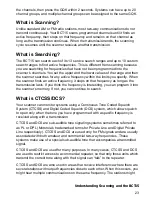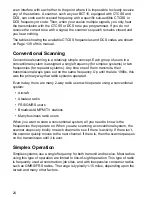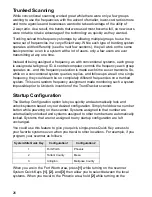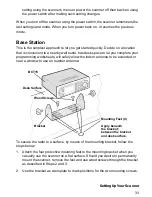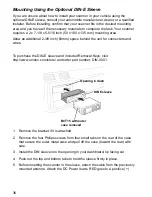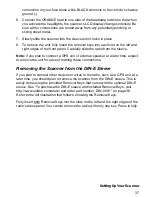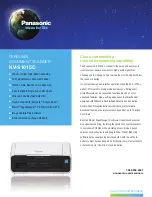
22
Understanding Scanning and the BCT15
This section provides you with additional background on how scanning works and
how your scanner provides that feature. You don’t really need to know all of this to
use your scanner, but some further background knowledge will help you get the
most from your BCT15.
Understanding the Scanner’s Memory
Your scanner’s memory is organized in an architecture called
Dynamic Allocated
Channel
memory. This type of memory is organized differently and more efficiently
than the bank/channel architecture used by traditional scanners. Dynamic
Allocated design matches how radio systems actually work much more closely,
making it easier to program and use your scanner and determine how much
memory you have used and how much you have left.
Instead of being organized into separate banks and channels, your scanner’s
memory is contained in a
pool
. You simply use as much memory as you need in
the pool to store as many frequencies, and talk group ID’s as desired. No memory
space is wasted, and you can tell at a glance how much memory you have used
and how much remains.
With a traditional scanner, when you program it to track a trunked system, you
must first program the frequencies. Since you can only program one trunking
system per bank in a traditional scanner, if there were (for example) 30
frequencies, the remaining channels in the bank are not used and therefore
wasted. Also, since some trunked systems might have hundreds of talk groups,
you would have had to enter those types of systems into multiple banks in order to
monitor and track all the ID’s.
Understanding Quick Keys
Traditional “Banked” scanners let you select and deselect banks by pressing a
single digit on the keypad. The BCT15 uses a similar method to turn on and off
scanning sites and systems. When you program a system or site, you assign a
quick key (System/Site Quick Key, or SQK) from 0 to 99. You can use the same
quick key for multiple systems, so that the systems are turned on and off together.
To turn a system/site on or off, just press the digit corresponding to the assigned
SQK. For two-digit SQK’s, first press
[.No]
, then enter the two-digit SQK.
The BCT15 lets you assign another quick key to a group of channels within a
system. This group quick key (GQK) can be from
[0]
-
[9]
. To turn on and off
channel groups, you press
F
while the scanner is scanning the system containing
















